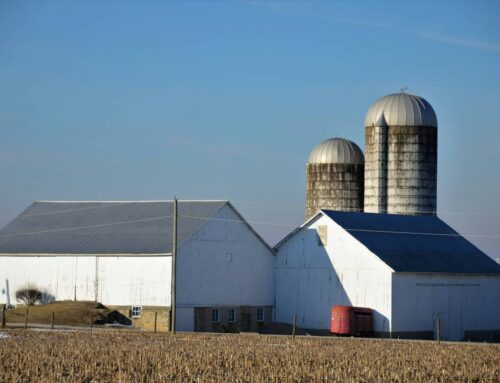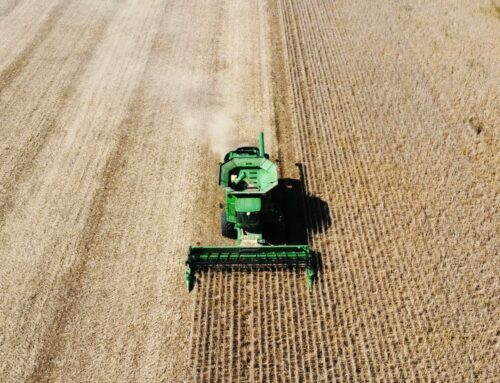President Biden’s FY23 budget for the Department of Agriculture (USDA) would increase spending on conservation programs and climate priorities. Spending on major conservation programs would increase to $8.55 billion in FY23, up from $7.85 billion in FY22. While these levels are primarily dictated by the 2018 farm bill, climate spending proposals in the budget are largely driven by USDA.
In late 2021, USDA requested comment on its proposal to spend $1 billion through the Commodity Credit Corporation (CCC) on climate-related pilot projects. In 2022, USDA announced the Partnerships for Climate Smart Commodities program and is currently accepting applications. While the goals of the program – sequestering carbon and reducing greenhouse gas (GHG) emissions – are laudable, USDA’s tapping the CCC to unilaterally spend $1 billion on a new program, is a cause for concern. Past administrations have used the CCC spending authority to undermine spending priorities agreed to in the farm bill or as a political bailout for damaging trade policy that most in Congress opposed. The desire to use the CCC to quickly direct funds to address a pressing concern (climate change) is understandable. But farm bill conservation programs are one of the few areas of bipartisan agreement. The administration should capitalize on this fact to work with Congress to achieve reforms that will be effective and long lasting.
Taxpayers and farmers would be better served by the administration working to secure increased funding for farm bill conservation programs and ensuring those programs make farmer-friendly climate mitigation one of the focuses of those programs. There are opportunities to do this both within the continued negotiations around some version of a climate-focused Build Back Better spending package and the oversight hearings for farm bill reauthorization that have started in the House and will begin soon in the Senate. Without naming the new Partnerships for Climate Smart Commodities program, the proposed budget does mention “climate-smart agriculture” and “climate-smart commodities” mostly in the context of the next farm bill. USDA says it will develop farm bill priorities and share them with Congress. That’s great. The sooner the better because discussions on reauthorization have already started.
Despite this omission, the overall budget proposes to spend $31.1 billion on discretionary programs, with mandatory spending making up the remainder – $165 billion – of the $196 billion in USDA program spending. While mandatory programs primarily include commodity programs, nutrition assistance, crop insurance, and some conservation programs, discretionary programs include funding for other priorities such as research and rural development.
Strategic goal #1 of USDA’s FY23 budget is “Combat Climate Change.” To achieve this, USDA proposes the following investments (not an exhaustive list):
- $2 million to “research, review, and ensure actuarial soundness of new products addressing climate change” within the crop insurance program, which could incentivize risk-reducing conservation practices within the existing federal program, leading to climate and water quality benefits
- $10.5 million to coordinate climate efforts across USDA, plus research and analysis to “assist stakeholders in implementing climate smart agriculture and forestry practices and oversee the… Department’s resilience and climate change adaptation plan.”
- $14 million for Climate Hubs
- $300 million in new funding for the Rural Utilities Service “to support the transition to carbon pollution-free electricity by 2035,” which would include “renewable energy systems, fossil fuel generating plants with carbon sequestration systems, and investments in environmental improvements.” The overall rural electric loan program would be funded at $6.5 billion. Some rural utilities programs have subsidized biomass energy in the past.
- $15 million increase inter-agency coordination “to support the creation of the Rural Clean Energy Initiative.”
- $21 million for soil sampling, integrating soil carbon monitoring into conservation planning, and assisting Natural Resources Conservation Service (NRCS) staff with “soil carbon and climate smart activities.”
- $100 million to “expand the delivery of conservation assistance for climate smart agriculture and forestry to farmers and ranchers who are beginning, limited resource, historically underserved and/or veterans.”
- Wildfire investments (see other post for more details)
- $8.55 billion for farm bill-authorized conservation programs (see table below for details on programs that set aside carbon-rich land – through the Conservation Reserve Program, CRP, for instance – in addition to working lands programs such as the Conservation Stewardship Program for cover crops, rotational grazing, etc.)
| USDA Conservation Program Spending in FY23 Budget Request, in Billions | |||||
| FY2019 Actual |
FY2020 Actual |
FY2021 Actual |
FY2022 Estimated |
FY2023 Budget |
|
| Conservation Reserve Program | $1.90 | $1.85 | $2.09 | $2.15 | $2.48 |
| Conservation Stewardship Program | $1.59 | $2.56 | $0.75 | $0.80 | $1.00 |
| Environmental Quality Incentives Program | $1.75 | $1.75 | $1.80 | $1.85 | $2.03 |
| Agricultural Conservation Easement Program | $0.45 | $0.45 | $0.45 | $0.45 | $0.45 |
| Regional Conservation Partnership Program | $0.30 | $0.30 | $0.30 | $0.30 | $0.30 |
| TOTAL | $6.00 | $6.91 | $5.39 | $7.85 | $8.55 |
| Sources: https://www.usda.gov/sites/default/files/documents/usda-fy2021-budget-summary.pdf, https://www.usda.gov/sites/default/files/documents/2022-, https://fas.org/sgp/crs/misc/R40763.pdfbudget-summary.pdf, https://www.cbo.gov/system/files/2021-02/51317-2021-02-usda.pdf, https://www.usda.gov/sites/default/files/documents/2023-usda-budget-summary.pdf |
|||||
Rather than creating new programs that lack details on how to achieve their stated goals and could likely fund many of the broken programs of the past, USDA should work to prioritize climate and water quality investments in existing conservation programs. USDA has begun to do this through CRP (for instance, establishing incentives for implementing practices that increase carbon sequestration and reduce GHG emissions) but more can be done to achieve greater climate and water quality benefits. Reforming commodity and crop insurance programs to promote resilience – instead of dependence on federal subsidies – should also be a priority or else these programs will work at cross purposes with conservation goals.










